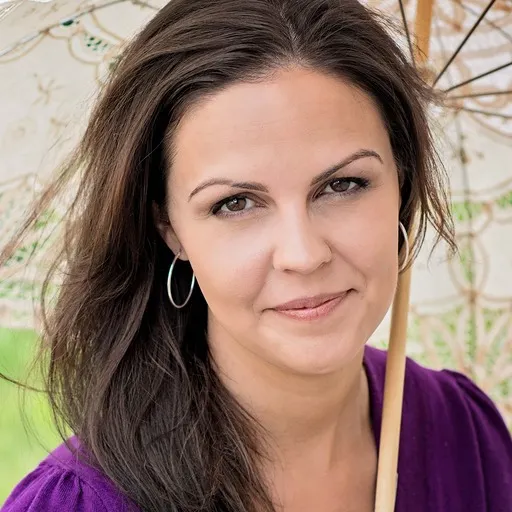If you’ve done the hard work of saving close to or over $250,000, then it’s time to consider having more than one savings account. Most savings accounts are insured up to that amount, and if you’ve exceeded that typical threshold, that overhang could be at risk. And even if you don’t have a bursting savings account yet, having more than one or shopping around still has some benefits.
How many savings accounts should you have?
It depends on how much you have saved and your savings goals. For the average person, it’s often recommended that you have at least two savings accounts factoring in your separate goals, and whether you have close to or more than the typically insured amount of $250,000.
Benefits of having multiple savings accounts
Having more than one savings account makes sense if you want to keep all your money secured and insured, have separate savings goals, or resist the temptation of spending all your hard-saved cash.
Keeps your money safe
If you have close to or more than $250,000 in one savings account, it’s worth opening another to spread the funds so that all your savings are insured.
Most savings accounts are insured up to $250,000 by the Federal Deposit Insurance Corporation (FDIC) if your account is in a bank. Or its insured with the National Credit Union Administration (NCUA) if you have an account at a credit union.
The FDIC and NCUA protect funds if the bank or credit union fails. Each depositor is insured to at least $250,000 per insured bank. This protection extends deposit accounts such as checking, savings, money market accounts and certificates of deposit (CDs).
Keeps your savings goals separate
If you have many goals but only one savings account, it can be difficult to track which goals are behind or ahead. Having multiple accounts can keep specific goals separate, like a future vacation, new car, retirement, child savings or home improvements.
Some banks also allow for multiple “pods” or “buckets” to keep savings goals separate, such as Current and Ally Savings. The pods or buckets are all tied to the same account, but the funds are separated for easy tracking and budgeting.
Shields your savings from temptation
If you only have one savings account linked to your everyday checking account, then you may be tempted to transfer over funds for impulsive spending — especially if you manage funds through a banking app where transferring funds only takes a few seconds.
If you find yourself transferring savings funds out frequently, consider getting a separate savings account that’s out of reach and not tied to your main checking account.
You can also look into automatic savings plans that automatically transfer funds from your main account to your separate savings account for a seamless transfer that builds up your savings over time.
Maximizes your earnings potential
Keeping your eyes peeled for better APYs on various accounts can increase your earnings. The average savings account has a rate of 0.4%, according to the FDIC. But you can find many top savings accounts offering APYs around over 5% APY — many of which are free to maintain and open.
Taking advantage of the highest rates possible helps build up your savings quicker.
Alternatively, you don’t have to have multiple, regular savings accounts. You can also look into opening alternative saving options such as CDs and applying CD laddering strategy to increase potential savings. CDs can be a great way to save, since the funds are locked for a set time.
Potentially unlocks a signup bonus
Opening up another account for the sole purpose of getting a signup bonus isn’t a good idea all the time, but if you’re in need of another account, you may as well look for some free money.
Signup bonuses often have requirements, such as depositing a certain amount of funds, going through with a number of transactions or meeting a certain balance requirement within a time frame.
While bonuses are great, make sure the savings account behind the offer is actually a good one — otherwise, you spent the time to meet the requirements for a bunk account that won’t do you any good long term.
Helps get around withdrawal limits
Regulation D prohibits consumers from withdrawing from their savings accounts more than six times a month. Although the regulation is currently suspended, some banks still enforce it.
While the idea of having a savings account is to keep your funds in the account so that it builds over time, emergencies can happen. If you need to make multiple withdrawals within a short period, you may want an account with more flexibility.
Or, at the very least, having another savings account gives you more access to funds if you’re still within the withdrawal limit on the other savings account.
Things to watch out for
Keep these factors in mind before opening multiple savings accounts.
- Tiered APYs. Some savings accounts have tiered APYs, often requiring account holders to maintain a specific balance to earn the highest interest rate possible. Splitting your savings across multiple accounts might prevent you from meeting the balance required to earn the highest APY on your other savings account.
- Fees. More common with large banks, some savings accounts carry monthly maintenance fees, often between $5 to $25. Having multiple savings accounts with monthly fees can quickly eat away at your savings.
- Confusion between accounts. If you have too many savings accounts, they might become difficult to keep track of. Some accounts require a certain balance to avoid a fee or earn a better rate. If you’re not careful, you might confuse accounts and get hit with excessive fees.
How to open multiple savings accounts
Opening up another savings account will likely be the same process you went through to open your first account. Consider these features before opening another account:
- APYs. The best savings accounts offer APYs that are 10 times higher than the national average. Some of the best are in the 5% range.
- Compare fees. You might find accounts with high monthly maintenance fees, withdrawal fees or transfers fees.
- Minimum opening deposits. While plenty of free accounts exist, many top savings accounts may require an opening deposit.
- ATM card and availability. ATM cards aren’t common for savings accounts, but if you want easier access to your one, look for ones that come with one.
Two-thirds have multiple savings accounts
While the majority of Americans (62%) have just the one savings account, over a quarter (27%) say they have two open savings accounts.
Bottom line
Having at least two savings accounts is the rule of thumb, but you might want more if you want to keep your goals separate or have a high balance that’s close to the insured amount. To learn more about savings accounts and saving alternatives, see our savings account guide.
Ask a question
More guides on Finder
-
Bread Savings™ High-Yield Savings Account Review
A free savings account that earns a strong APY once you meet the $100 opening deposit requirement.
-
High-Yield Chime Savings Account review
Chime’s savings account has a solid APY and has no monthly fees, but it requires Chime’s checking account.
-
UFB Portfolio Savings Account Review
No monthly fees, but you need a high balance to get its best rates.
-
Best Vacation Savings Accounts in April 2025
The banks that offer the best vacation and travel savings accounts are SoFi, Upgrade, Bread, Bask, Varo, Marcus, Barclays and more.
-
Untouchable Savings Accounts and CDs
If you struggle to save, you could benefit from a savings account or CD that won’t allow you to withdraw funds.
-
My Savings Direct review: MySavings Account
This account boasts a high 0.50% APY, but transactions are strictly limited to electronic funds transfers.
-
Pros and Cons of Savings Accounts
Compare the advantages and disadvantages of savings accounts.
-
Uninterrupted Compound Interest Accounts
Uninterrupted compound interest accounts pay interest on your initial balance and the interest you continually earn if you don’t withdraw.
-
Best savings accounts of April 2025
How to choose the best savings account for your situation.
-
Best High-Yield Savings Accounts of April 2025
Compare some of the best high-yield savings accounts available.

